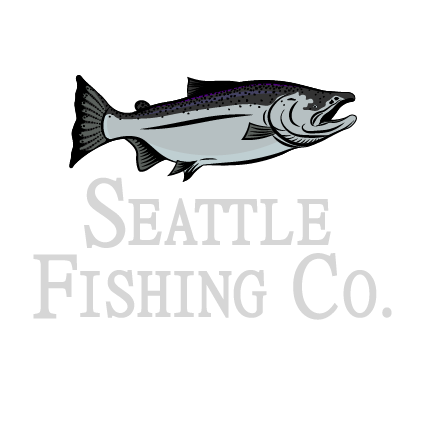Alpine Lake Fishing In Washington
It is no secret that Washington’s hiking trails are popular in the summer. I enjoy hiking and backpacking as much as anyone, but for me, it’s often a means to an end. And that end is fishing for spectacularly-colored alpine trout! Washington’s Cascade and Olympic Mountains offer thousands of miles of trails and many lead to high country lakes. Fishing in these remote areas can be an unforgettable experience with unpressured trout, unbeatable scenery, and memories and photos that will carry you through to your next alpine adventure.
According to the Washington Department of Fish and Wildlife, our state has about 1,600 high mountain lakes, ranging from backyard pool-sized tarns to reservoirs that fill entire valleys. And thanks to the industrious work of stockers, as well as some natural distribution via birds, flooding and who-the-hell-knows-how-they-got-up-there, many of them are full of hungry Cutthroat, Rainbow and Eastern Brook Trout. A few even hold elusive Golden Trout.
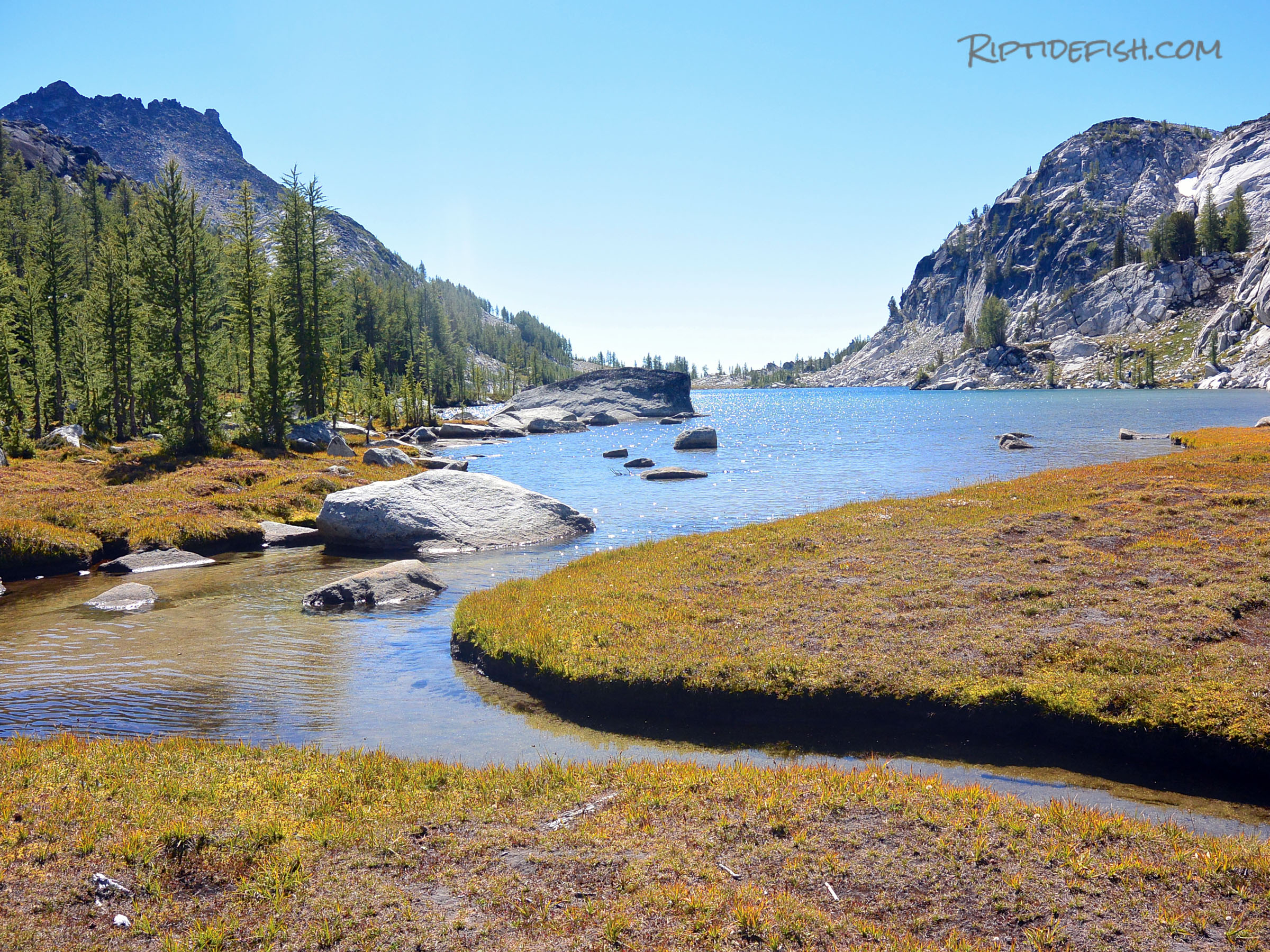
Like any fishery, the first step is deciding where to go. But unlike most angling, you don’t have the luxury of stopping on the side of the road to check water conditions. Due to our lingering maritime snowpack, this is typically a July – September fishery as many lakes remain frozen until mid-summer. Early and late season it’s worth checking the Washington Trails Association website or other hiking resources as they often have trip reports and photos that will reveal snow and melt-off conditions.
While WDFW’s website includes a variety of pages and tables listing stocking reports and what species you’re likely to find in a given lake, it’s not an exhaustive or constantly updated list. If you’re uncertain a lake even contains fish, manage your expectations. Half the fun is exploring new areas. While you may get skunked, you could stumble upon a new lake that yields 10″ to 14” Brook Trout on nearly every cast (see Schaefer Lake below).
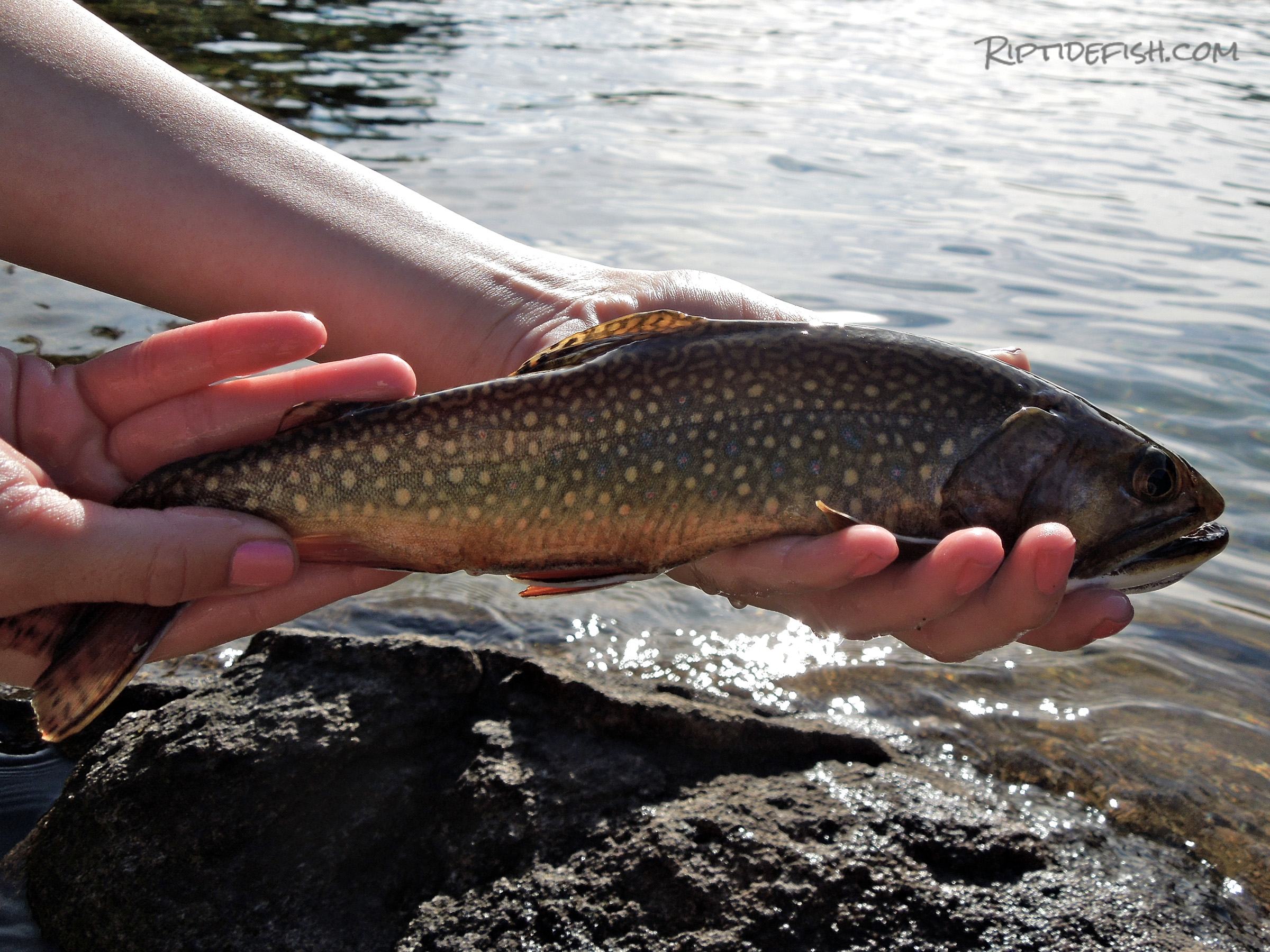
Best Trout Lakes in Washington’s High Country
Many anglers probably have their favorite mountain fishery, but a few well-regarded options in the Central Cascades are Blanca and Heather Lakes in Snohomish County, Snow Lakes and Schaefer Lake near Leavenworth, Lake Ingalls in the Teanaway, and countless lakes in the Alpine Lakes Wilderness north of I-90. WDFW maintains a list of suggested mountain lakes for fishing on their website, but I can’t speak to the quality of all of them. Yet.
Venturing farther off the beaten path into the wilderness of the North Cascades, one can find some truly exceptional fishing for large rainbow and cutthroat trout, fisheries that I’m surprised don’t attract more attention among Northwest anglers. Conditions and weather change constantly up here—it may snow event in August—but if you’re willing to do some research, travel prepared for a true backcountry experience, and hike six miles or more into the Pasayten or Lake Chelan-Sawtooth wilderness areas, a few hallowed lakes offer a shot at trout 16″-20″, and some even larger.
For slightly tamer trout exploration, I’ve found some phenomenal fishing for beautiful westslope cutthroat in South Cascades lakes around Mount Rainier and White Pass while scouting for elk. The trails here tend to see more people than the far North Cascades, so look for lakes beyond the reach of casual day hikers and horse-campers. Still, it can be well worth the extra driving for trout typically larger than you’ll find in the Snoqualmie and Stevens Pass areas.
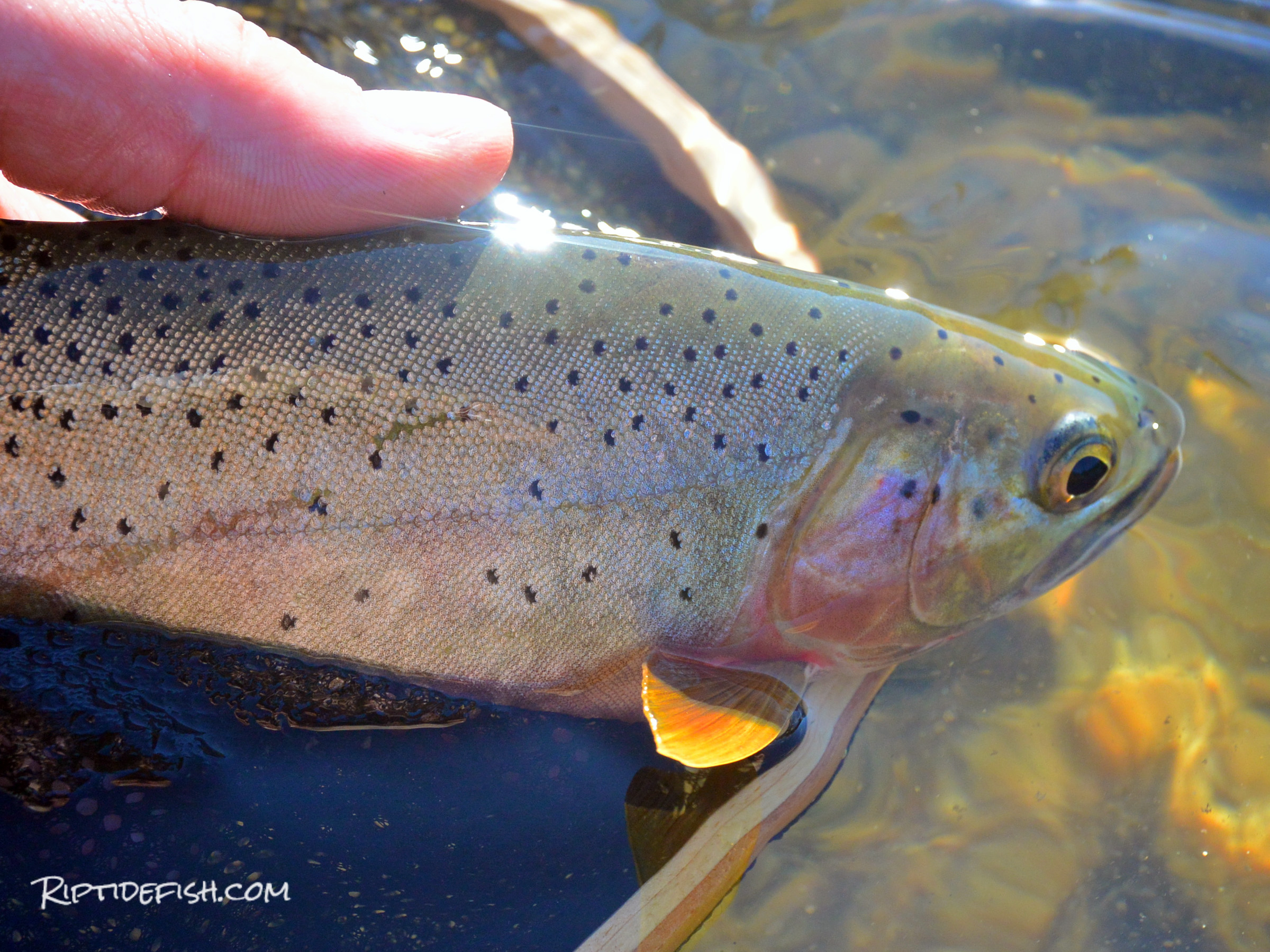
Alpine Trout Fishing Tackle
Now let’s talk gear. First off, everything you’re fishing with you will be carrying on your back. For several miles. Uphill. So leave the tackle box at home and put five to ten favorite lures or flies in a small carrying case. Throw in some 3 – 6 lb test leader, standard trout split-shot weights, swivels and pliers and you’re good to go. Collapsible backpacking rods work fine, but most two-piece trout rods (or four-piece fly rods) can be easily strapped to the outside of a pack, and the extra length and light action they offer provides more play from these typically smaller fish.
If I’m gear fishing, small black and green Roostertails are my go-to. Dick Nites, Triple-Teasers, and extra-small Blue Foxes also work. Admittedly, Power Bait or single salmon eggs can be successful. However, fish inhale them and there’s nothing worse than tearing out the throat of a beautiful native Cutthroat you’d planned to release. For this reason I avoid fishing with bait unless I know invasive Brook Trout are the lake’s only occupants. Those I prefer wrapped in aluminum foil with olive oil, pepper and a slice of lemon and placed on the hot coals of the night’s campfire.
Related Post – The Very Best Trout Fishing Lures of the Pacific Northwest
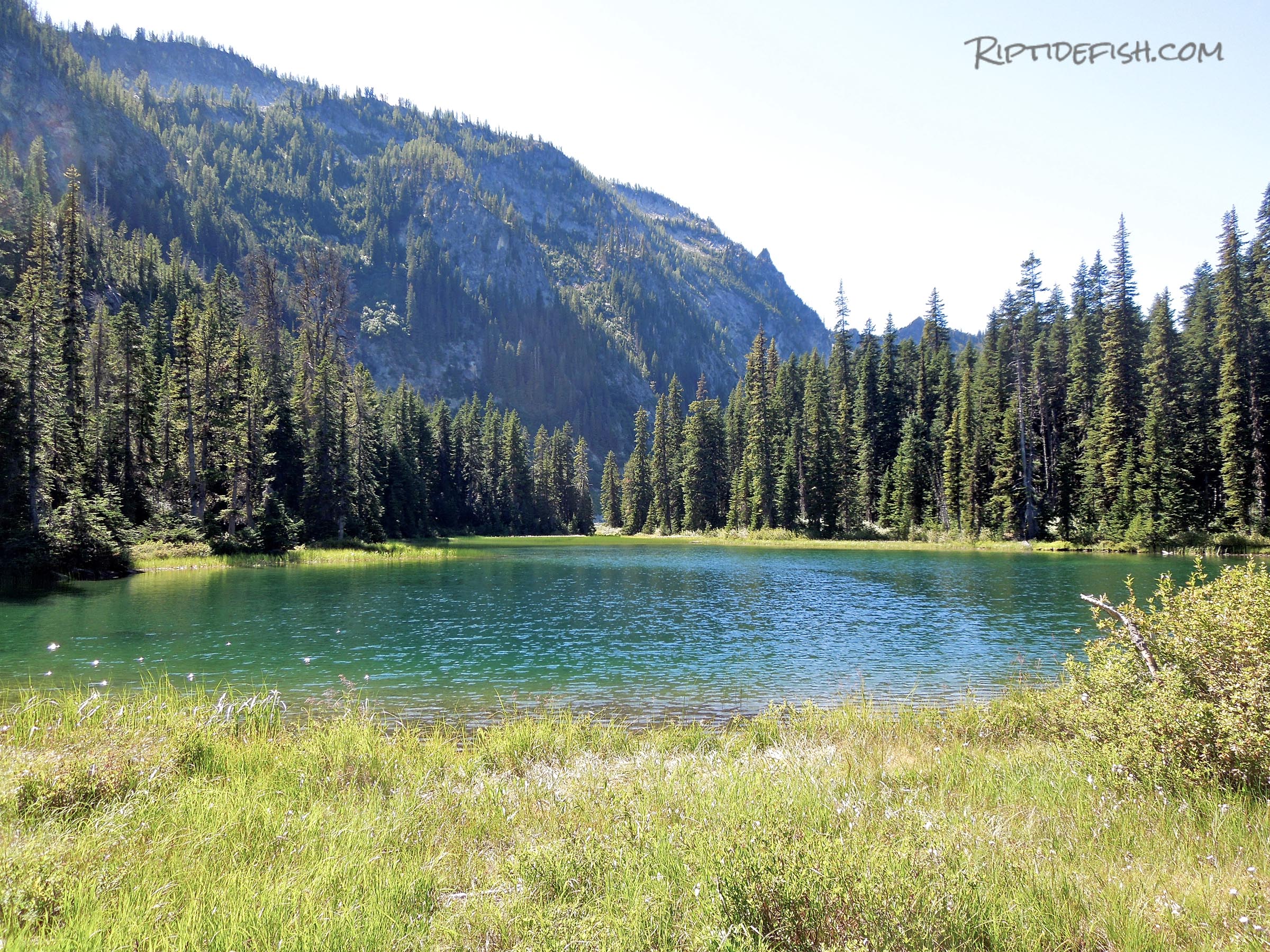
Fly Fishing for Mountain Trout in the PNW
Fly fishing is my preferred method for mountain lakes and creeks. Both because I enjoy the holistic angling experience it provides, and because I firmly believe it’s a significantly more effective and adaptable way of fishing for most trout. Often overpopulated with a limited food supply, mountain trout are usually on the smaller side, around five to ten inches, with anything over 12″ being one to brag about. A two to four weight fly rod makes them a lot more exciting to play. Unless I’m seeing risers, my first fly here is often a universal one: Wooley Buggers. I like them in black or olive with a bit of flash, no bigger than a size #8. Small Sculpzillas can also be effective; trout love that wagging tail. Fish streamers similar to how you would a spinner; cast it out far, then strip it back while alternating the speed and length of your retrieve to imitate a struggling baitfish. This type of wet fly can also help weed out smaller trout, and draw in the lakes larger specimens.
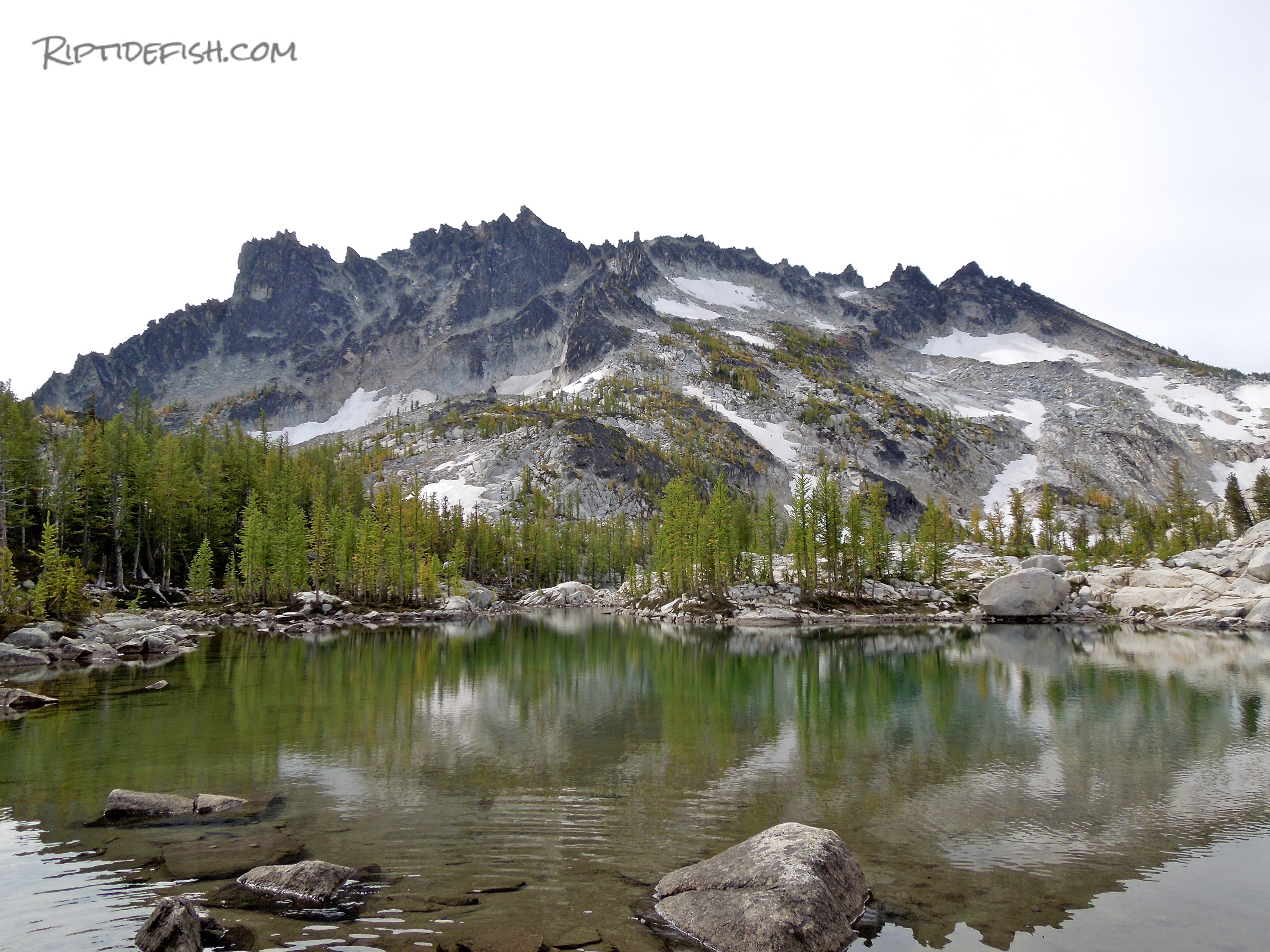
Rising Trout and Dry Flies
If trout are rising, then you’re in luck. Some of my best dry-fly fishing has been on mountain lakes, and during a hatch 20 fish days are possible. If you can’t match-the-hatch right away, Elk Hair Caddis, Royal Wulffs and Royal Coachmans are classic choices always worth a try. Mountain trout typically aren’t as picky as more heavily-pressured fish in lowland rivers, but you may still have to cycle through your box to key in on what’s working. Other general options are ant and beetle flies, Parachute Adams, or an Iron Blue Dun in size #16, which makes a killer mosquito imitation for the evenings.
Cold Alpine Waters and Subsurface Flies
The final fly category is nymphs, which are excellent on many small lakes and mountain streams. Copper Johns, Lightning Bugs and Prince Nymphs are a few of my favorites. Chironomids and scuds can also work very well depending on the lake. With fly selection, the flash from a shiny bead head can be more important than the lake entomology. I like a super slowly retrieved nymph if nothing else is working, and tend to forgo the indicator (bobber), instead using a 9′ or longer fluorocarbon leader and keeping my eye on the end of my floating fly line for erratic movement. One of my favorite fish of all time was a brilliantly-colored cutthroat caught on the first cast in a shallow pool nearly 7,000 feet up in the Enchantments Basin on a size #16 Copper John.
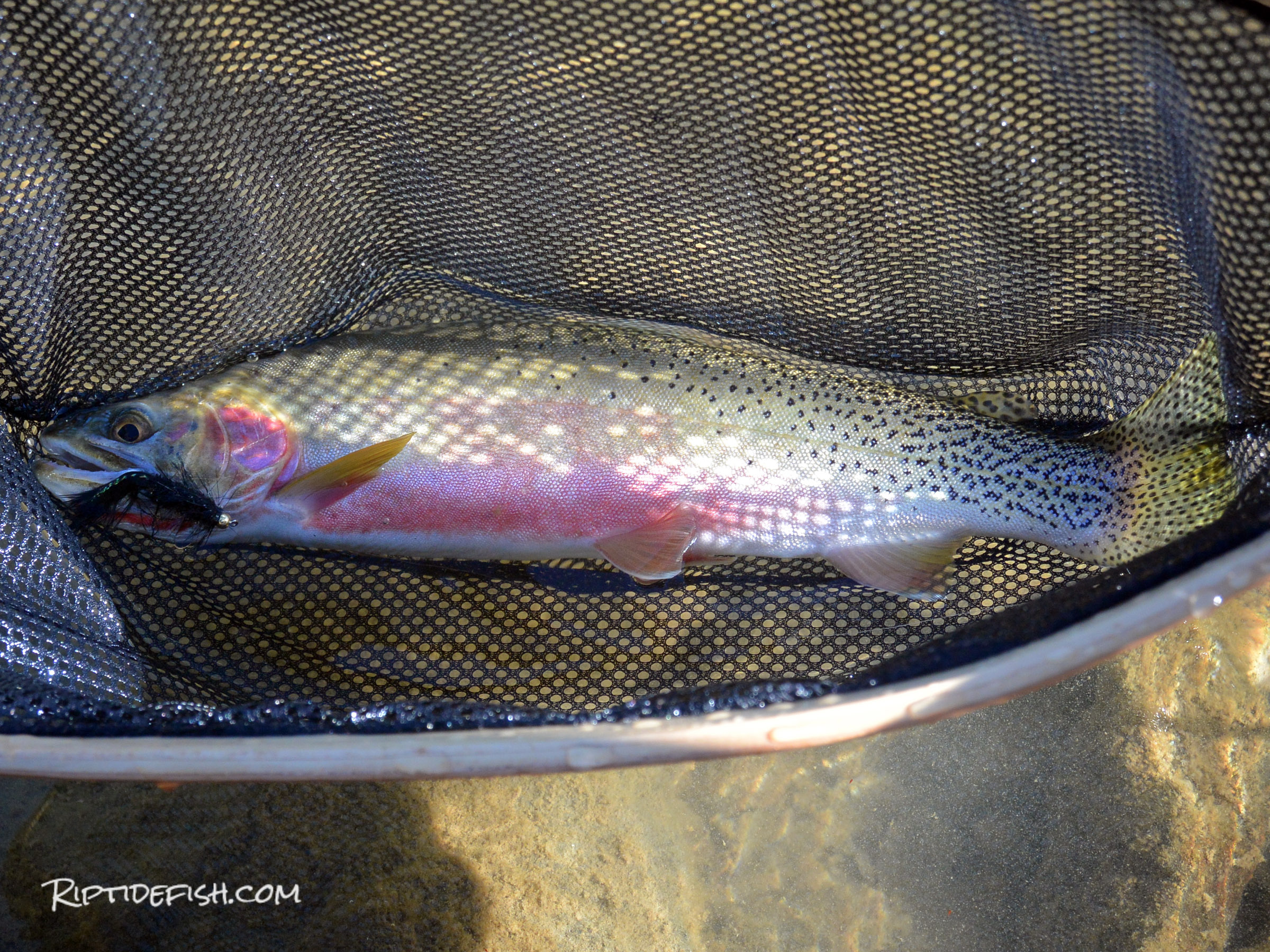
Backcountry Hiking and Fishing Equipment
Before we close, I’ll touch briefly on hiking and other gear. A few summers ago I was fishing a lake above Highway 2 when another angler arrived at the top of the steep five mile trail, pulled a float-tube from his huge pack, inflated it by hand, and caught a lot more fish than I did. Lugging a raft or float tube into the mountains works. And new packrafts and inflatable SUPs are further expanding the options for alpine watercraft.
Most of you probably know hiking gear. But I will stress how important it is to bring a light rain shell and a quality insulating layer when hiking in the Pacific Northwest. It may be sunny and hot at the parking lot, but you never know what the weather will do at 4,000+ feet. I always bring a shell jacket and a light piece of synthetic insulation. They often don’t leave the bottom of my pack, but when they do I’m glad I have them. Get a good weather forecast and carry the Hiking 10 Essentials (first aid kit, knife, compass, extra food, water, etc). A GPS or apps like OnX and GAIA are also exceptional route-finding tools, especially when searching for that rumored lake well off the trail. This is the mountains you’re fishing in, hang out in them long enough and something will go wrong.
Quality hiking boots and sturdy socks can make a world of difference on any hike, especially with fishing gear on your back. Wool socks typically mean fewer blisters and if your feet are hot on the approach, well you’re fishing a cool mountain lake. Often I’ll bring a pair of flip flops or Chaco sandals in my pack, they help with wading or trying to get out to that perfect boulder.
Casting to fish you can see is the best. Mountain lakes are typically quite clear, but even so polarized glasses mean you can see more fish. They also block out high-altitude UV rays and are definitely worth bringing along.
Experience Washington’s Alpine Lake Fishing
Be sure to check local regulations, as not all mountain lakes in our region are open for fishing. And don’t be afraid to keep a few fish if the regulations allow it, especially if non-native! These lakes can get over-populated. Just be sure you’re able to keep your catch cool on the hike out. Even better, enjoy them over a fire or stove while backpacking. One of my favorites is to gut and head a trout, cook it in foil, then carefully scrape the meat into a cooked Mountain House or Backpackers Pantry pasta meal. Few things are tastier in the high country!
Lastly, don’t forget your swimsuit or board shorts. If the fish aren’t biting, a hike followed by a swim in a cool mountain lake is always a great way to spend a hot summer day.
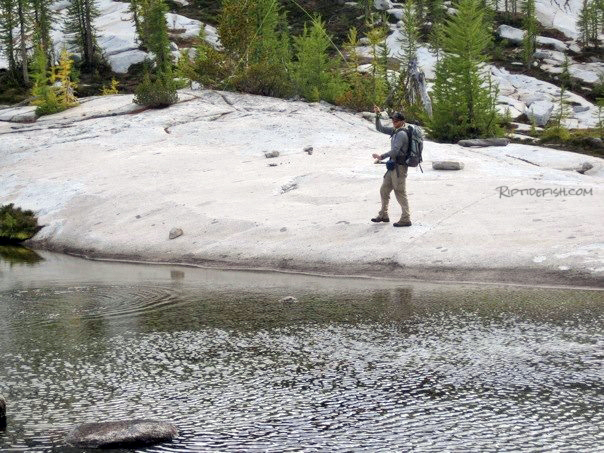
Chase Gunnell is a communications professional in Seattle and former journalist. When not working on projects for local conservation non-profits, he’s usually salmon fishing on Puget Sound, swinging flies and spoons for steelhead, or heading into the backcountry in search of trout, mule deer, or fresh powder.


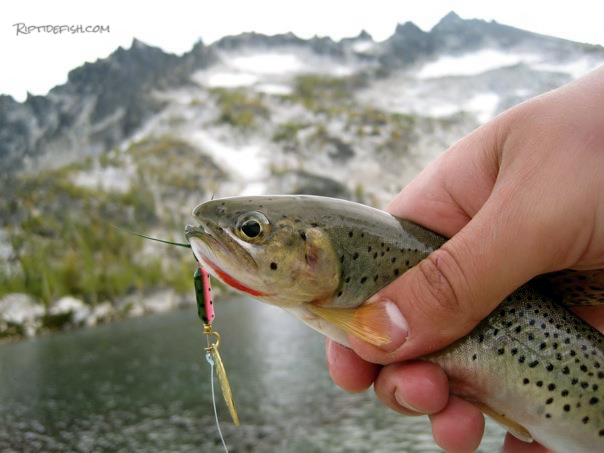












 14 Awesome Fishing Lakes in the Snoqualmie Valley
14 Awesome Fishing Lakes in the Snoqualmie Valley
